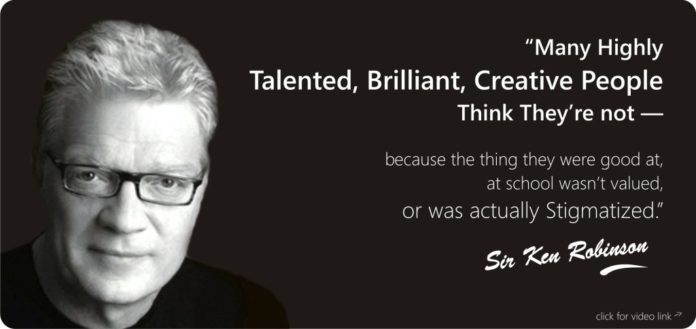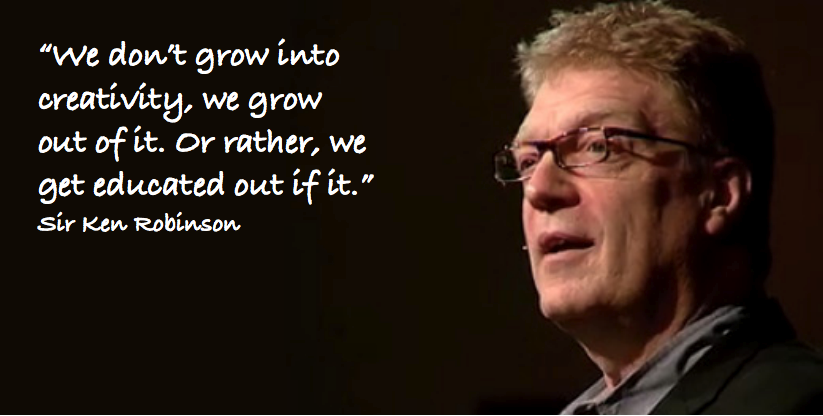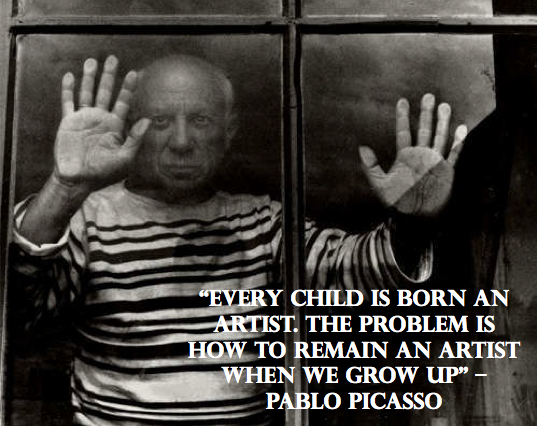
ADHD in children is a sensitive topic. Some refuse to acknowledge its existence, whle others speak from experience. What we do know is that whatever the definition, existence, or cause of ADHD, its diagnosis in children has risen tenfold in the last decade.
The leading scholar on the topic, an education and creativity expert, Sir Ken Robinson makes no apology for his views on the rising problem within our young. Attacking the education system and the medical profession on a two tier discussion, he propels you into an argument addressing what he calls the “fictitious epidemic.” He points out that it is now “medical fashion” to label children as damaged, and this is the first part of the problem society now faces. The second is the education system, citing its failure to maintain a child’s interest in what they’re learning.[1]
“We are educating people out of their creativity,” Robinson says. He argues that education is based inherently in becoming a good worker, rather than a creative thinker. His website which hosts several of his talks points out that “students with restless minds and bodies — far from being cultivated for their energy and curiosity — are ignored or even stigmatized, with terrible consequences.”[2]
Sir Ken Robinson, who was knighted for his endeavors in the realm of education in 2003, highlights the extraordinary capacities that children have and the innovative nature that they possess. His “contention with children is that they all have tremendous talents and that we squander them pretty ruthlessly [in education].”
He states in one seminar called How Schools Kill Creativity, that “creativity and literacy should be treated with the same status.” He defends creativity with a passion rarely seen. “Kids are not frightened to be wrong. If you’re not prepared to be wrong, they won’t come up with anything original…By adulthood, most have lost the capacity because mistakes are stigmatized.”
He uses an example of a brilliant choreographer, Gillian Lynne, who is renowned for her work on Cats, Phantom of the Opera, Andrew Lloyd Webber, ballet on the international platform, who is now a multi-millionaire. In the 1930’s she was diagnosed with a learning disability: she was fidgety, restless and unable to concentrate at school; never turning in homework and “disrupting” the other children. Eventually she had to see a specialist, aged 8, for the “problems” she had caused at school. By the end of the appointment, thankfully, the specialist diagnosed her as a dancer. “She had to move to think.” It was this ‘diagnosis’ that started her immensely successful career in ballet. As Robinson aptly puts it, in the 1930’s, “ADHD wasn’t an available condition…it hadn’t been invented.”[3]
His argument is this: “We get educated out of creativity”, and then we happily label our children because they don’t fit in with the fundamental principles of an education system which was shaped for the industrial revolution, where creativity was seen as a defect and the ability to repeat the same mindless process over and over again a virtue. The gift of the human imagination needs to be used wisely. We need to see our creative capacities as the virtues that they are. We need to “see our children for the hope that they are…our task is to educate their whole being so they can face this future [that we may not see]…and our job is to help them make something of it.”
It’s an insight into what he calls “strip mining our minds” through an education system that was designed to enhance industrialization. We are killing creativity by labeling it, by drugging it, and by not nurturing it. Children are creative beings by default.
[1] McAdam, S. (2015, March 6). How ADHD is Linked to a Failing Education System. Retrieved from http://www.trueactivist.com/how-adhd-is-linked-to-a-failing-education-system/?utm_source=fb&utm_medium=fb&utm_campaign=antimedia
[2] Ken Robinson (2015). [TED]. Retrieved from http://www.ted.com/speakers/sir_ken_robinson
[3] Ken Robinson (2015) [TED]. How schools kill creativity. Retrieved from http://www.ted.com/talks/ken_robinson_says_schools_kill_creativity#t-912578









